Warhol’s less-known works from his later years come to O.C.
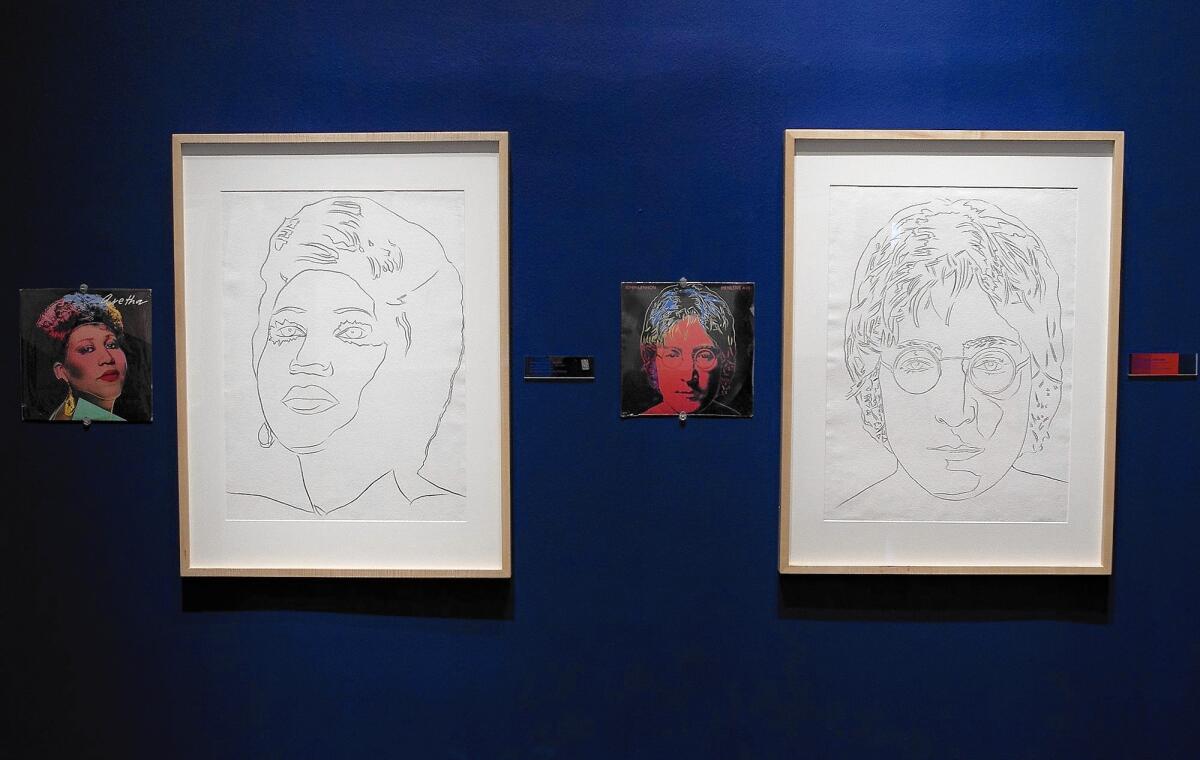
- Share via
Think about American artist Andy Warhol, and you’ll recall a mop of shock-white hair, bright, colorful pop art portraits of everyday objects like Campbell’s soup cans and Coca-Cola bottles, and his prediction that, “In the future, everyone will be world-famous for 15 minutes.”
That was all in the 1960s. His career continued more quietly in the ‘70s and ‘80s. While the artist was prolific, his work in those decades is not as well known. Now a collection of the pieces has come to Orange County.
“The Late Drawings of Andy Warhol 1973-1987” is the newest exhibit at the Fullerton Museum Center. Fifty large-scale drawings are here on tour from the Andy Warhol Museum in Pittsburgh through mid-August.
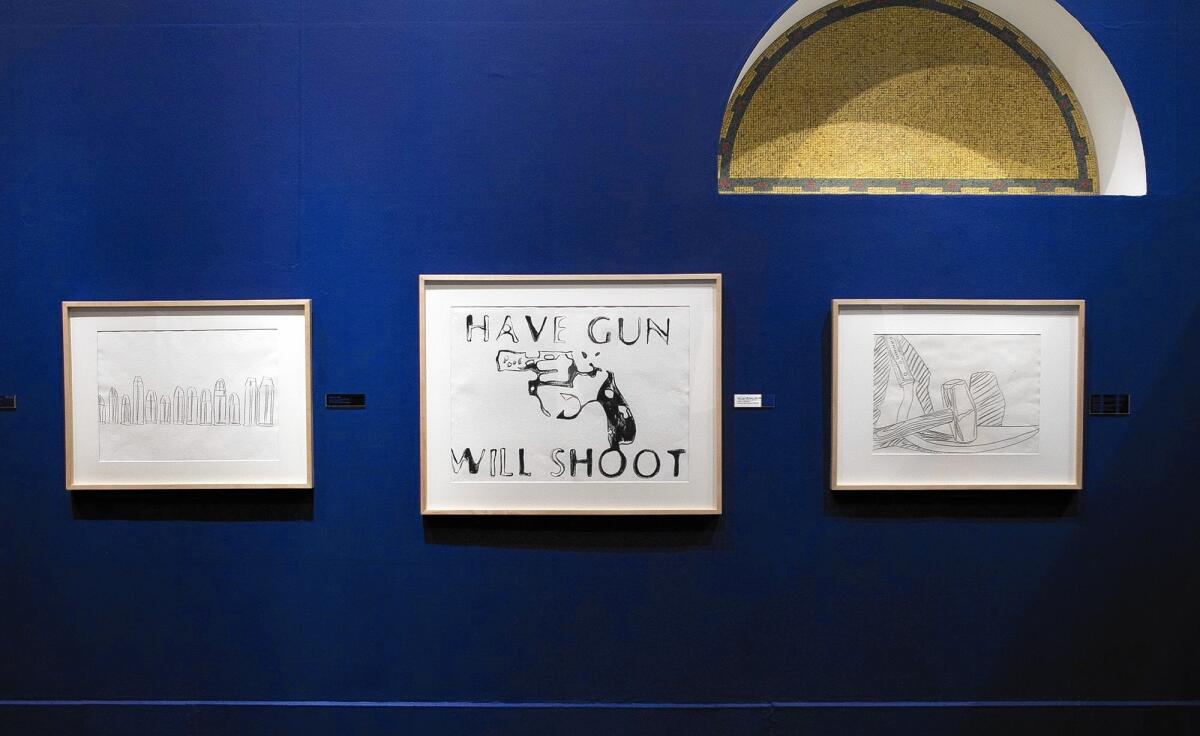
The works are light on detail and largely devoid of color. Some of the drawings have not been shown before, said Janet Buzan, president of the Museum Center Assn.’s board of directors.
“The style of these drawings may seem simple, but it is Warholian,” Buzan said. “They show his fascination with celebrities, commercialism and cosmetic surgery.”
For Warhol, making drawings of people and things that fascinated him was a lifelong habit.
“Drawing was essential to him,” said Kelly Chidester, the museum curator. “He started drawing as a child. He got into commercial art first, then photography, films, silkscreen painting and printmaking, but he always came back to drawing.”
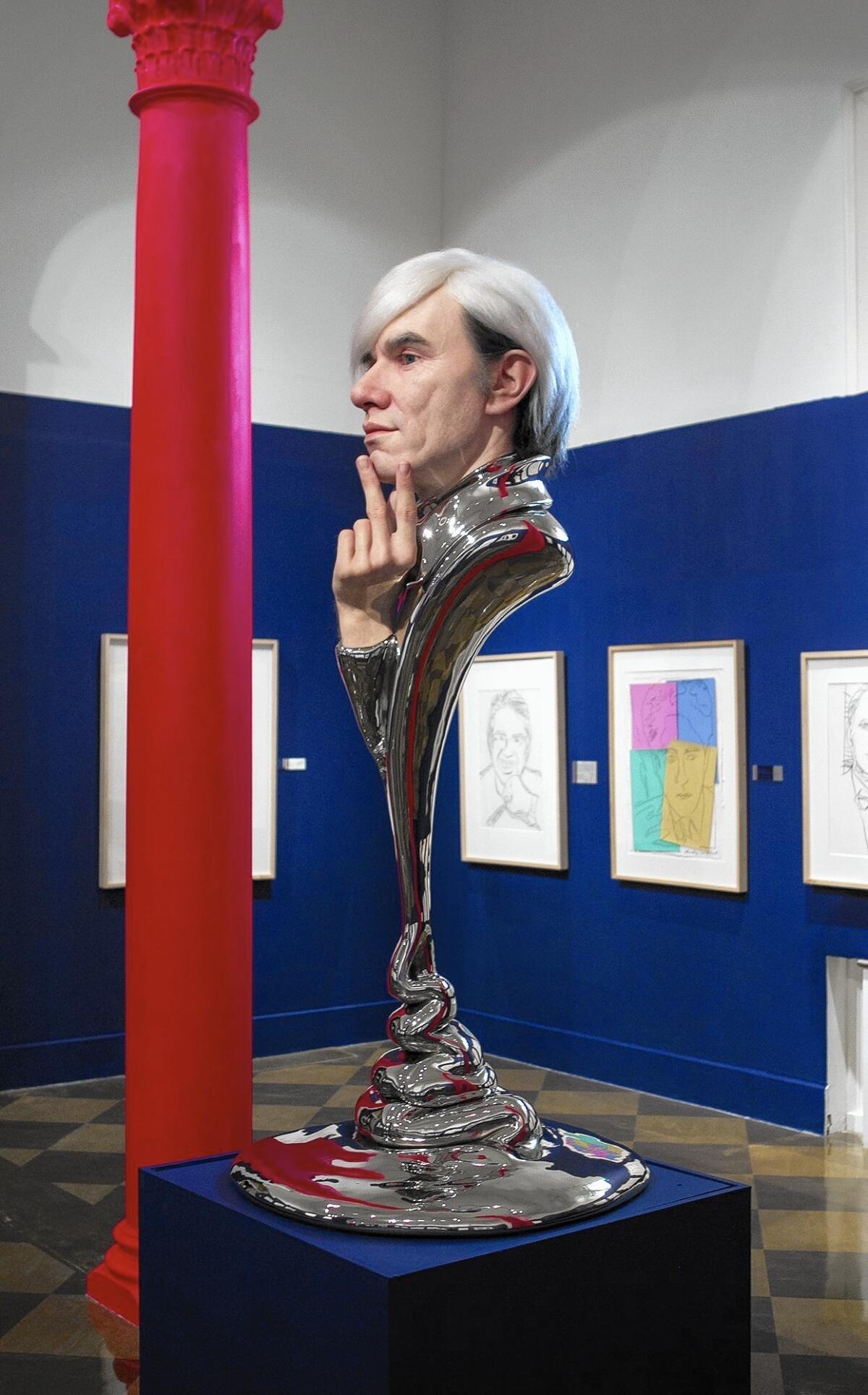
The display includes fashion ads for shoes and wigs and iconic American symbols from Mickey Mouse to the Statue of Liberty. Other drawings feature celebrities he admired, from John Wayne to Mick Jagger, as well as U.S. presidents, Cabbage Patch dolls, his dachshund dog and household fixtures, including a toilet. Sharp objects are featured in drawings of nose jobs and breast augmentation.
There are initial sketches for record album covers for Aretha Franklin (“Aretha,” 1986) and (posthumously) John Lennon (“Menlove Ave.,” 1986). The painting that emerged from the Franklin drawing is said to be Warhol’s final work.
“The collection is a bit of a glimpse into his life and what he was interested in,” Chidester said. Warhol “was very private about his personal life, but he had a public face. He could be bizarre, but he was an astute businessman when it came to selling his art. And he always knew exactly what he wanted to do.
“If you really look at the work, you can see how distinct the lines are. There are no eraser marks and no supporting lines, just single lines. He had a deliberate, steady hand.”
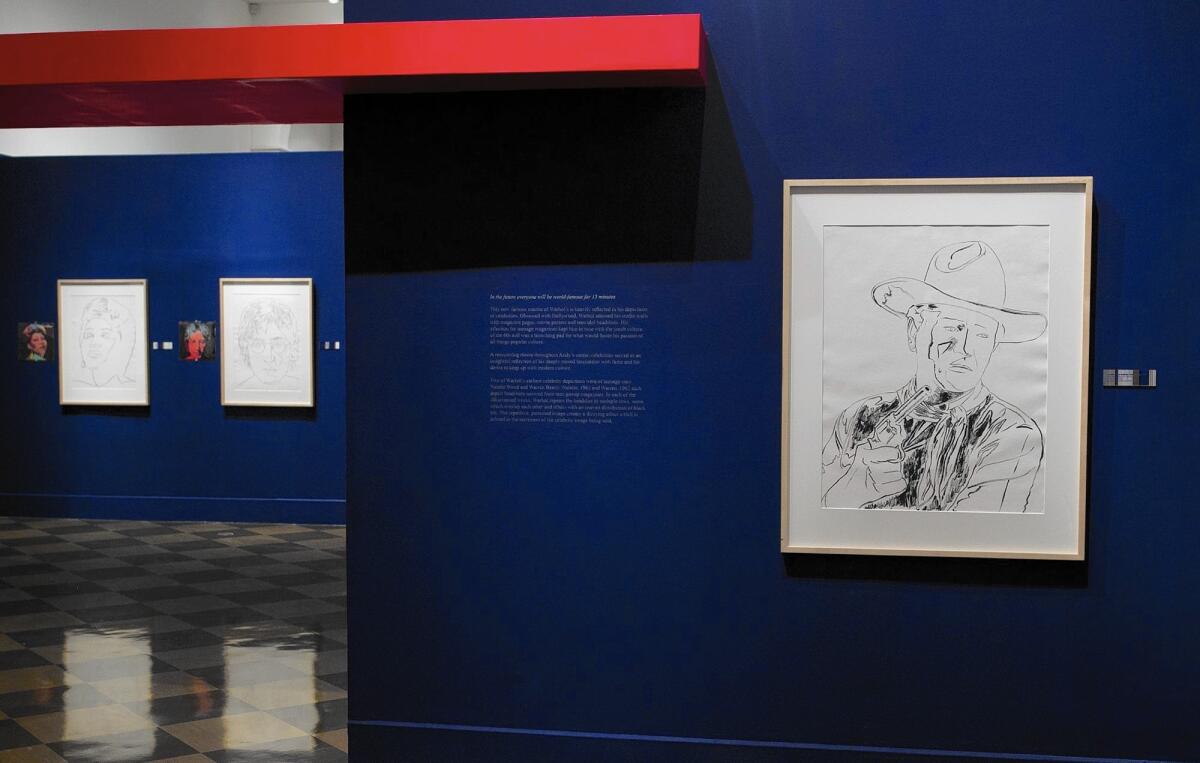
Chidester has added three showstopper elements to the exhibit. The entry wall has a neon sign mounted on colorful wallpaper that features scads of pictures of Warhol in old photo-booth style.
A TV monitor shows clips of news shows about Warhol as well as scenes from films he shot.
Most impressive is a towering, hyper-realistic bust of Warhol by one-time Hollywood makeup artist Kazuhiro Tsuji. The silicon resin makes the larger-than-life head and hand amazingly lifelike. It rests on an elongated suit of gleaming chrome.
A poignant section in the collection are works revealing an obsession with death. Warhol was gravely injured when a troubled acquaintance fired four shots at him in his Manhattan studio, The Factory, in 1968. One bullet hit Warhol in the abdomen.
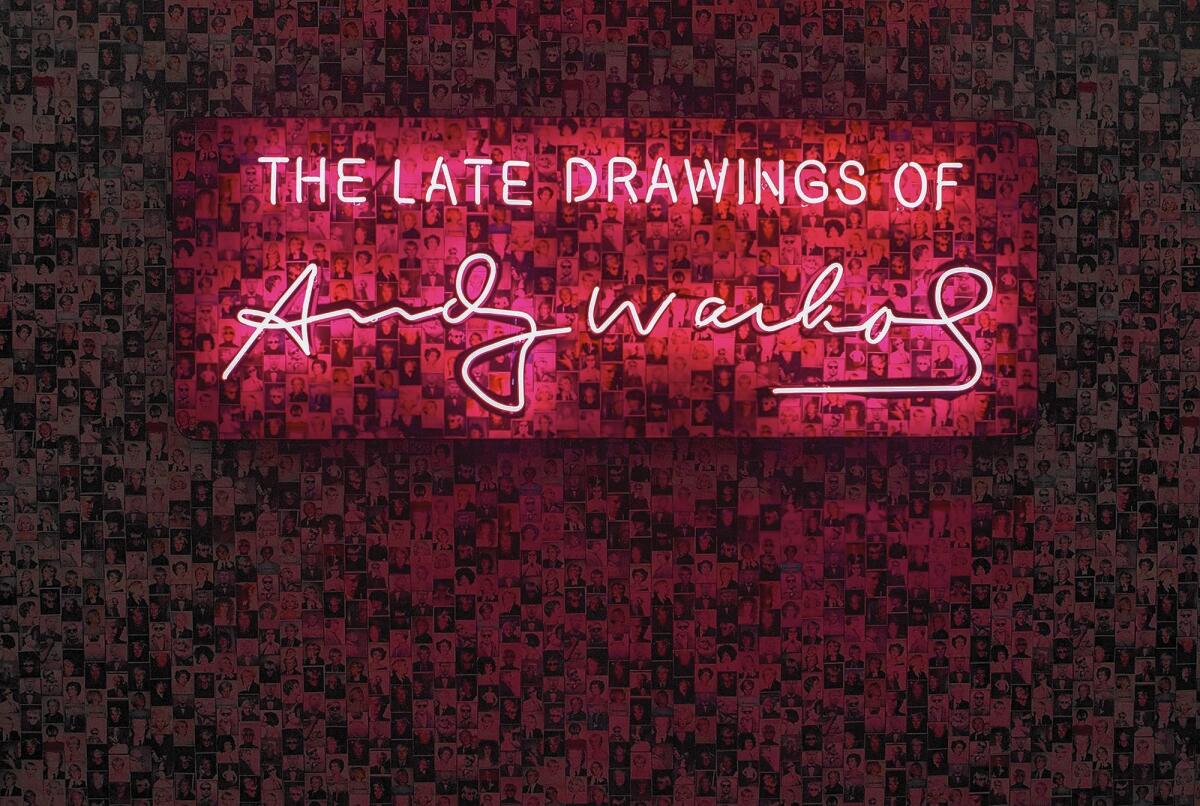
“It was a single bullet, but it injured several major organs,” including his lungs, esophagus, spleen, liver and stomach, Chidester said. “He had a long and painful recuperation. People close to him said he never recovered from it emotionally. He often said he wished he had died that day.”
Reflections of the incident include drawings of bullets, pistols and skulls. “Have Gun, Will Shoot” is hand-printed on one such image.
Death came in February 1987. Warhol had reluctantly gone to the hospital for gall bladder surgery. While recuperating the next day, he died of a heart attack.
*
IF YOU GO
What: “The Late Drawings of Andy Warhol 1973-1987”
Where: Fullerton Museum Center, 301 N. Pomona Ave., Fullerton
When: Noon to 4 p.m. Tuesdays, Wednesdays, Fridays, Saturdays and Sundays; noon to 8 p.m. Thursdays; closed Mondays. Through Aug.14
Cost: General admission, $5; students and seniors, $4; children, $3
Information: (714) 738-6545; https://ci.fullerton.ca.us/museum/
Special events: “Totally Warhol Tuesdays,” art classes in screen printing, self-portraits, comic book art, op art and other topics inspired by the works of Andy Warhol, will be held Tuesdays from June 28 to July 26. Children’s classes are from 10 a.m. to noon; adult versions of the same classes are from 5:30 to 7:30 p.m. the same days. The cost is $15 each class or $48 for the series of five.
“Factory Art Creativity vs. Creative Direction” is an experts’ panel discussion of “factory”-created art and artists who produce large volumes of commercially successful works using armies of assistants. This event will be held at 2 p.m. Aug.14. The cost is $10.